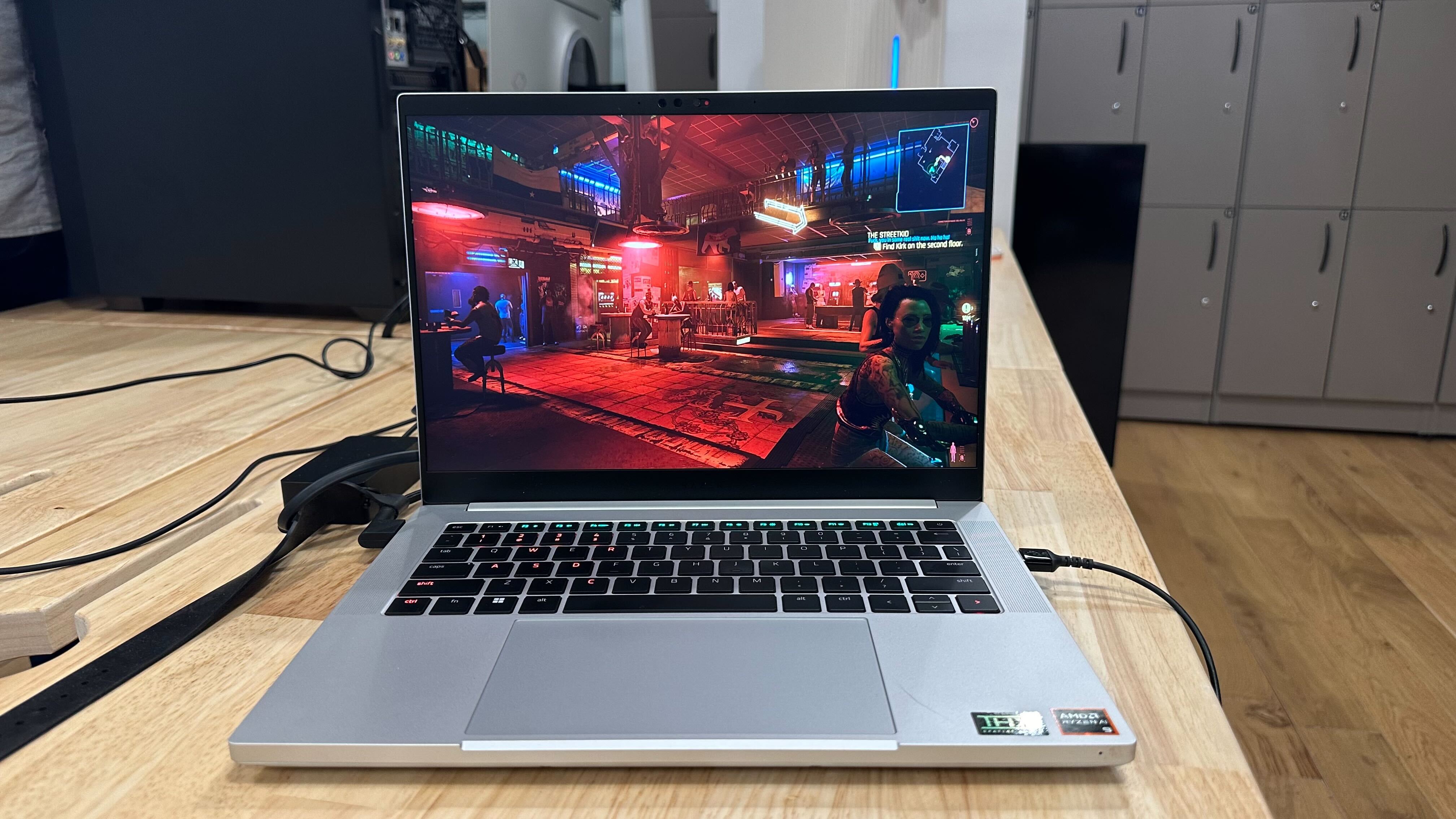
Integrated GPUs keep improving over the years, to the point where you don't need a dedicated gaming GPU to play most games on medium settings at 1080p.
AMD has updated the Fluid Motion Frames technology to boost frame rates and enhance gameplay on integrated AMD Radeon graphics cards. We've already raved about the gaming experience on the new AMD Ryzen AI 9 HX 370 chips, so of course we had to check out the technical preview of AFMF 2 to see how the new tech changes the AMD gaming experience.
Granted, some games will always be an exception, its not likely you'll be playing Red Dead Redemption II on an iGPU anytime soon. But for games like Assassin's Creed Mirage, Far Cry 6, and Final Fantasy XIV: Dawntrail you could get a solidly smooth gaming experience.
Cue the benchmarks
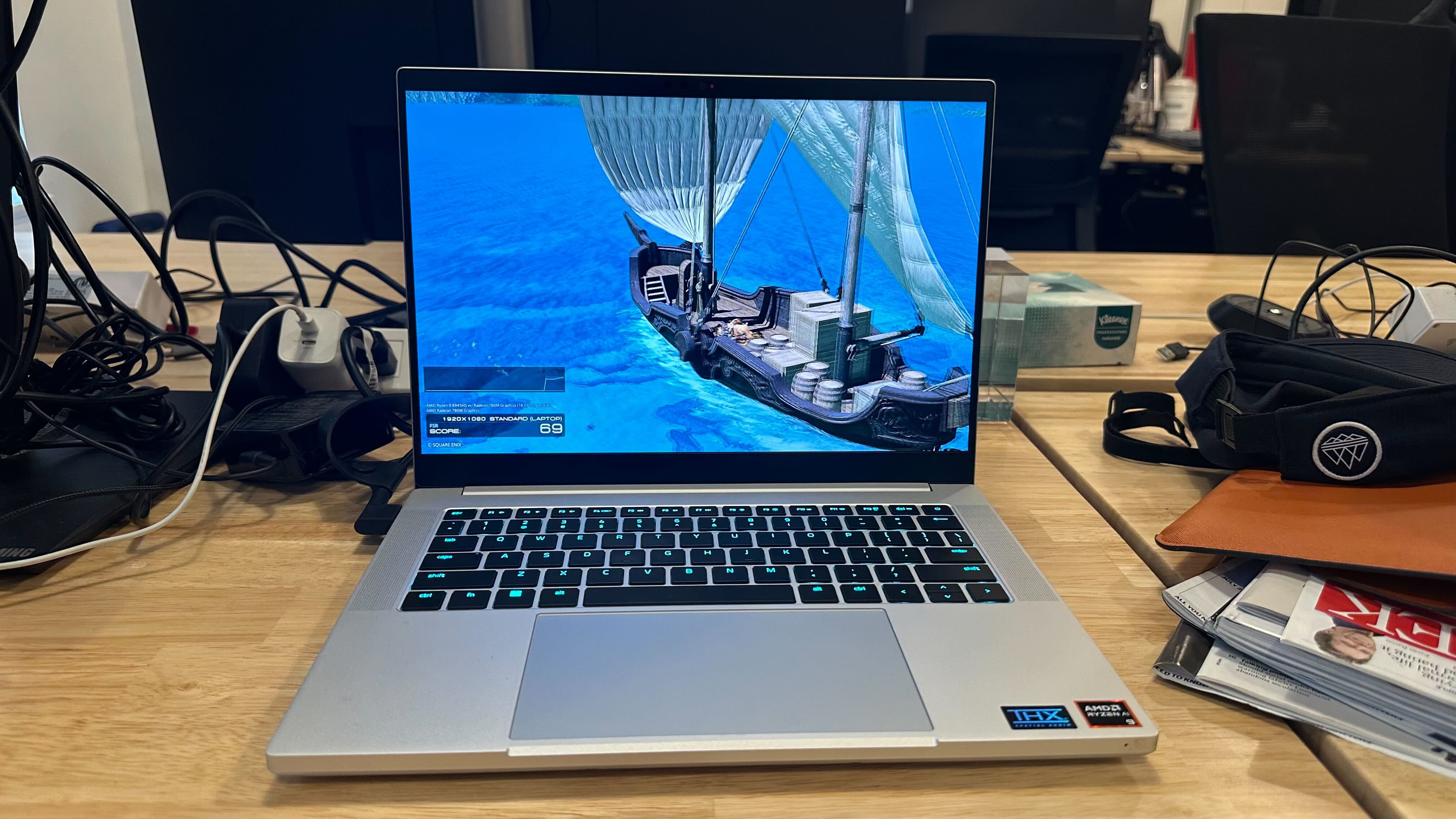
Given my previous role as a lab tester for Laptop Mag, I naturally decided to benchmark the one AMD laptop I still have on hand. While the AFMF 2 technology is designed to work best with the AMD Ryzen AI 300 series processors, it is compatible with Ryzen 7000 and Ryzen 8000 series chipsets as well. My one AMD system is the Razer Blade 14, which features a Ryzen 9 8945 HS processor and an Nvidia RTX 4070 GPU. To test the new AFMF 2 technology, I disabled the RTX 4070 to check the Radeon 780M iGPU performance. While I would have preferred to use a laptop without a discrete GPU, I didn't happen to have any other AMD systems around. Since the Blade 14 is designed to run a discrete GPU and has an older AMD processor than the Ryzen AI 300 series, my results could be well under what you might see once AFMF 2 gets its full launch.
To test the iGPU performance across a range of game types and optimization levels, I benchmarked the Razer Blade 14 on Assassin's Creed Mirage, Cyberpunk 2077, Far Cry 6, and Final Fantasy XIV: Dawntrail using the external benchmark program. The laptop was set to "Best Performance" mode in Windows 11's power settings, and I disabled all programs running in the background. I ran the benchmarks using Medium and Standard (Laptop) graphics presets at 1080p resolution and AMD FSR 2 where possible. I ran all four benchmarks three times and reported the average frame rate for a better indication of performance.
I ran the first set of benchmarks with Radeon Super Resolution and AFMF 1 enabled on the latest drivers for the Ryzen 8945HS processor and Radeon 780M integrated graphics card (32.0.11037.4004). The second set of benchmarks updated the graphics driver to the AFMF 2 technical preview build (32.0.12011.1010) provided by AMD, with Radeon Super Resolution and AFMF 2 enabled.
Our benchmarks saw a 2 fps gain on Assassin's Creed Mirage which equates to a 7% increase in performance, a 13 fps gain on Cyberpunk 2077 which equates to a 59% increase in performance, a 1 fps gain on Far Cry 6 which equates to a 3% increase in performance, and a 0 fps gain on Final Fantasy XIV: Dawntrail. Of course, the Dawntrail benchmark is an external .exe file, so it may not benefit from the AFMF 2 technology.
While a gain of only a few frames per second isn't a massive increase, when we're talking about framerates below 60 fps, each extra frame can do a lot to smooth out the feeling of a game from something that feels like a slideshow into something that feels actually playable. Plus, getting Cyberpunk 2077 to run above 30 FPS on an integrated graphics card is pretty darn impressive.
Hands-on testing
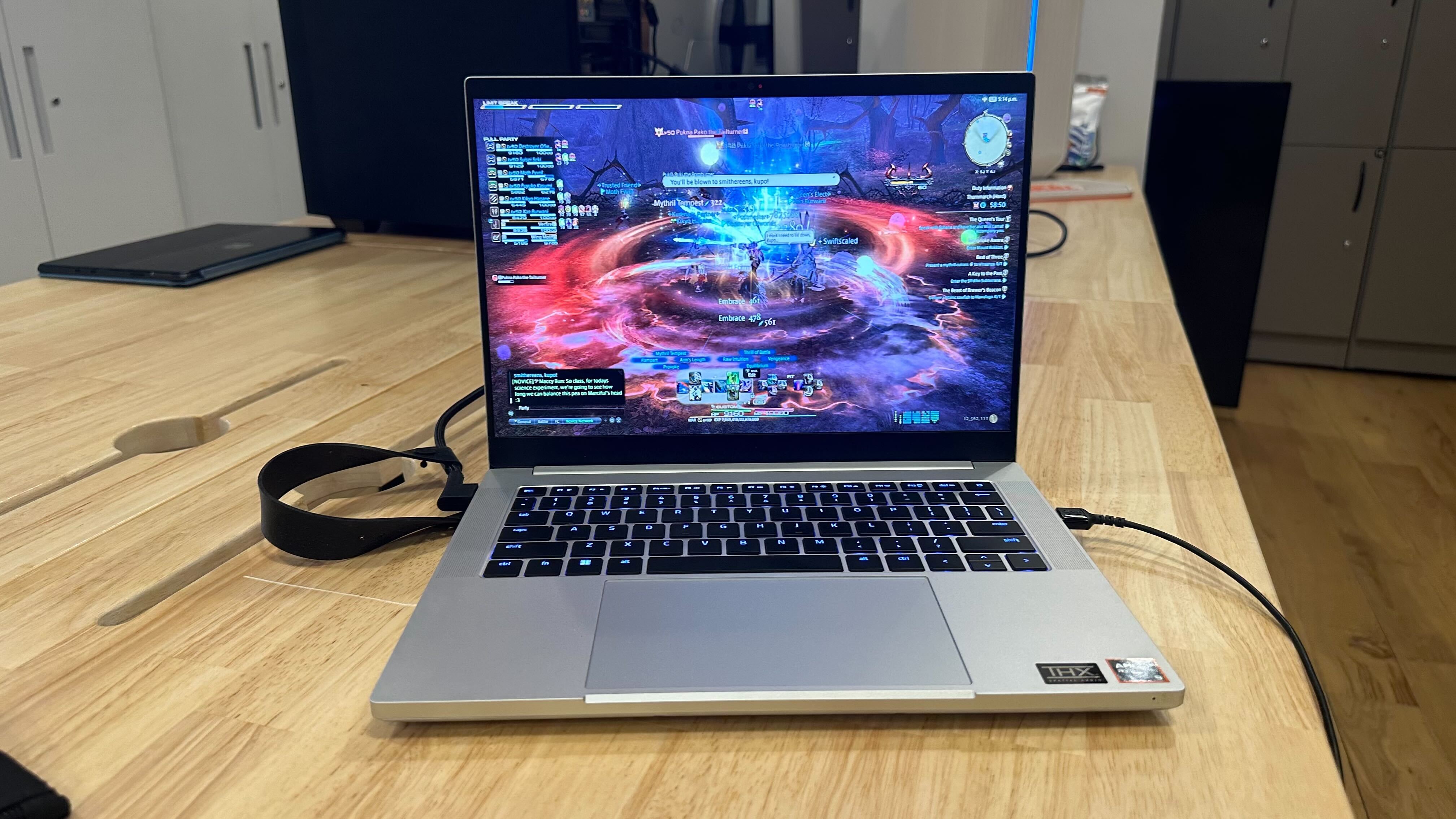
As much as I love a good benchmark, benchmark scores can only tell you so much about the lived experience of playing a game on an iGPU. So I spent some time noodling around in Final Fantasy XIV: Dawntrail and Cyberpunk 2077 to see how both games handled with the updated AMD drivers.
In Final Fantasy XIV: Dawntrail, I had fun running around the end-game hub city Solution Nine to see how well the integrated GPU handled the cyberpunk-style zone, then popped into a randomized encounter to check how the updated AFMF 2 drivers handled combat. While the iGPU did alright with Solution Nine maintaining a steady 30 fps, the Dawntrail graphics update presented a clear challenge to the integrated Radeon graphics. The combat encounter I ran was a trial from the Final Fantasy XIV: A Realm Reborn cycle and was a far smoother experience. Based on the in-game framerate monitor, the new Fluid Motion Frames 2 technology presented a consistent 40-45 fps experience.
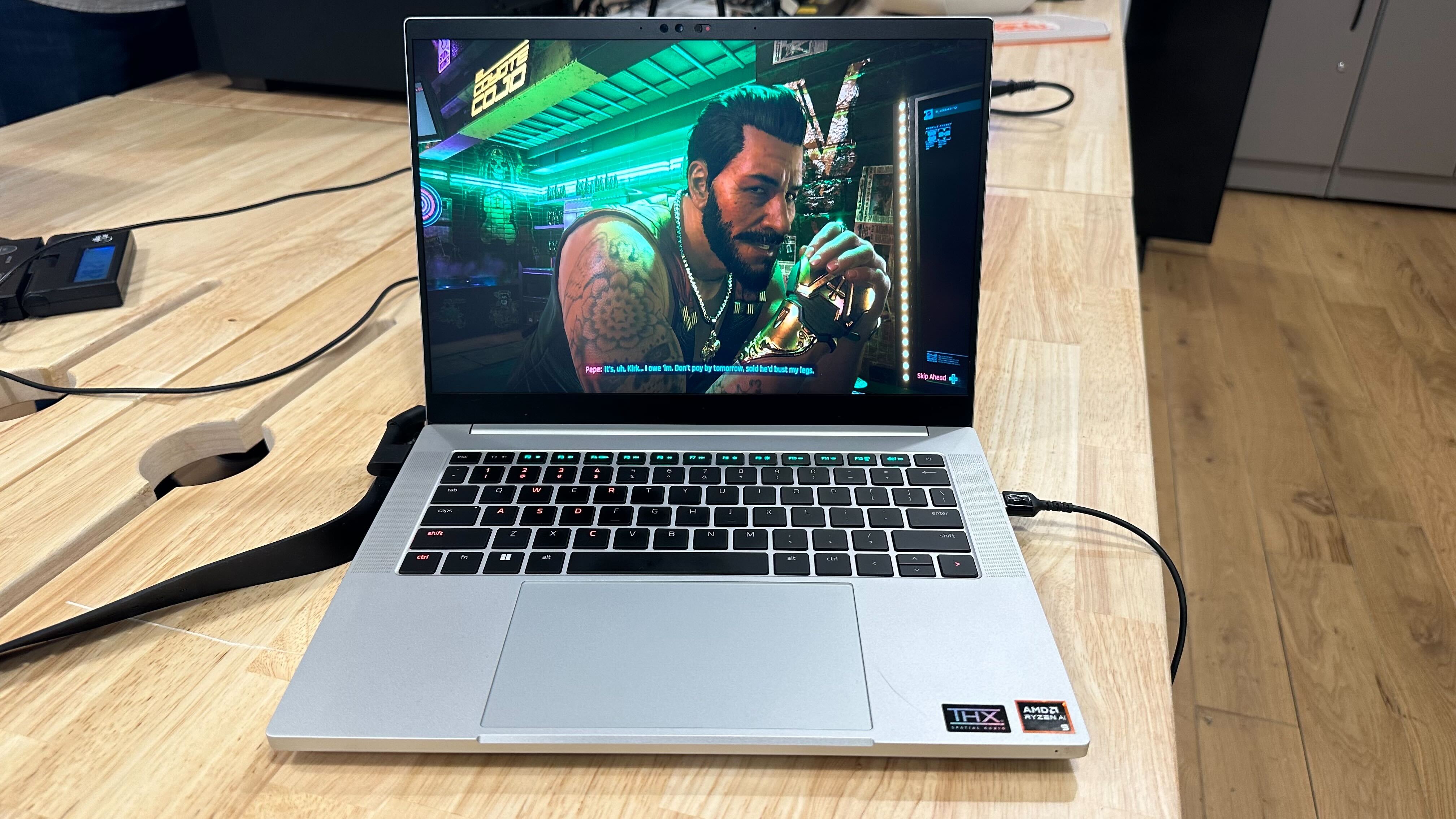
On Cyberpunk 2077, I was able to start a new character, run through the intro, and even wander around the bar with no visible artifacting, frame-rate drops, or stutters. I did have the game on medium settings still since the 3 iGPU on my Ryzen 9 8945HS doesn't have ray tracing capabilities. I did miss the slick ray-traced reflections and enhanced lighting and shadow effects, but otherwise, the game played as smoothly on the Radeon 780M as it does on modern consoles.
Outlook
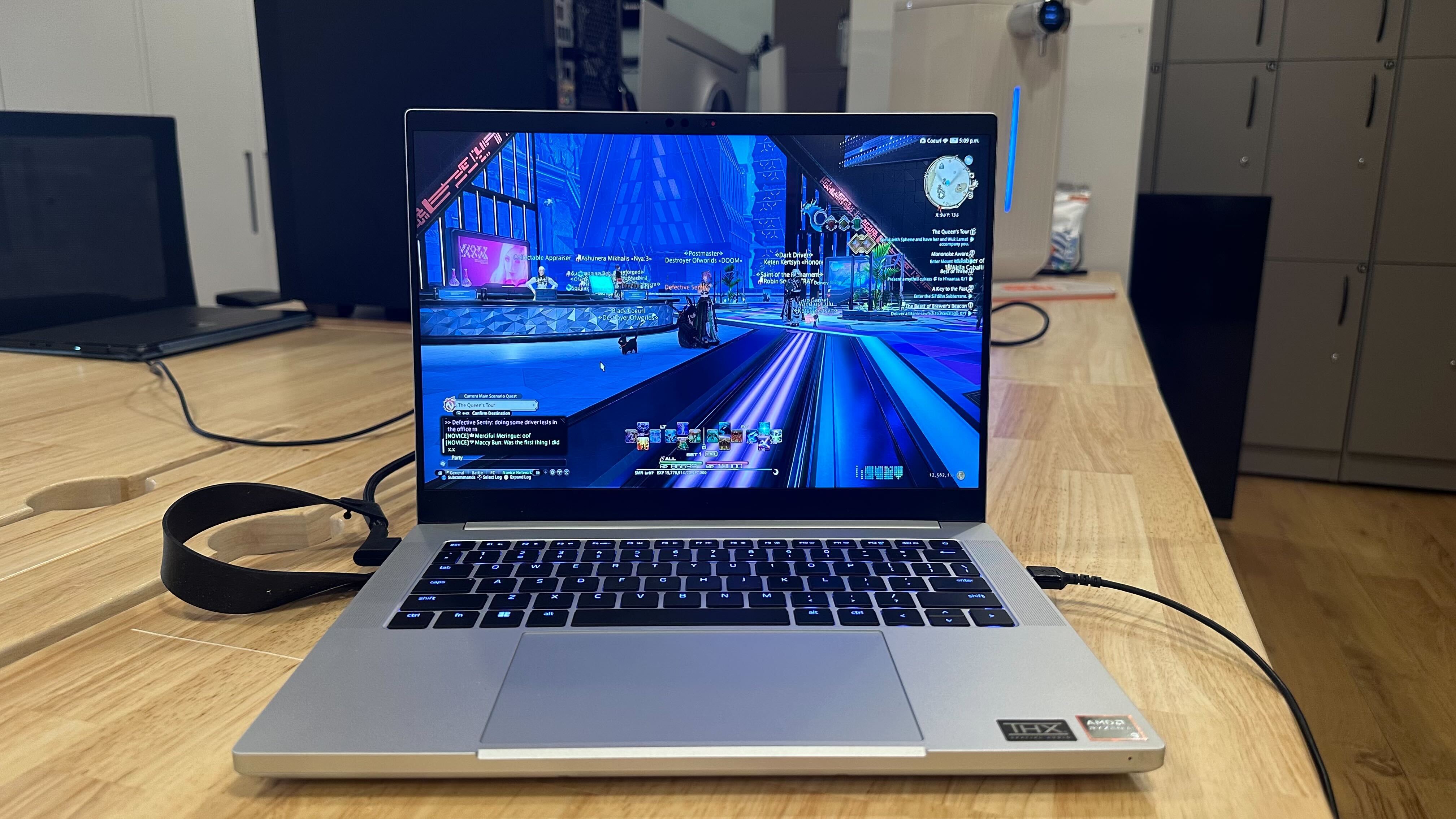
I'm using a Ryzen 8000 series CPU which does have a less powerful iGPU than the current AMD Ryzen AI 300 series processors with the updated Zen 5 architecture and RDNA 3.5 graphics technology. So new AMD cards will likely get much greater increases, and AMD themselves have indicated users should expect up an increase of up to 78% on Cyberpunk 2077 with the new Fluid Motion Frames.
While most gamers aren't going to be swapping out their desktop PCs or gaming laptops for an ultrabook anytime soon, this does have some great implications for the handheld gaming PC market. All handheld gaming PCs from the Steam Deck to the Asus ROG Ally X and MSI Claw 8 AI+ use integrated graphics chips, and most of them use AMD processors. So getting the update to AFMF 2 could make your AMD-powered handheld gaming PC better than ever.
This feels especially true as AMD's Fluid Motion Frames technology was one of the reasons Acer opted for the Ryzen 7 8840HS processor on the Nitro Blaze 7 handheld PC coming later this year.







